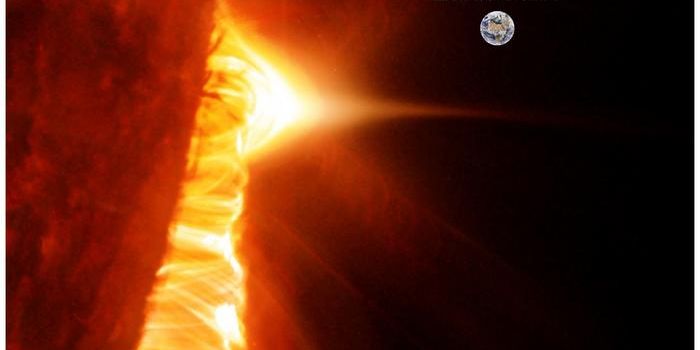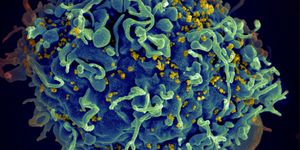NASA's NEOWISE Mission Nears its Final Act as Solar Activity Peaks
In humanity’s attempt to identify asteroid threats to Earth, NASA’s NEOWISE (Near-Earth Object Wide-field Infrared Survey Explorer) space telescope has been tirelessly working to identify near-Earth asteroids and other small bodies that could pose a threat to life on our small, blue world. However, all space missions end at some point, as NASA recently announced that increased solar activity is causing NEOWISE’s orbit around Earth to slowly degrade, with estimates stating it will become inoperable sometime in 2025 and will eventually burn up in Earth’s atmosphere.
Artist’s concept of NEOWISE with the infrared sky in the background that the mission observed. The string of red dots is Holda, the first asteroid the space telescope detected shortly after being “reborn” as NEOWISE in 2013. (Credit: NASA/JPL-Caltech)
“The mission has planned for this day a long time,” said Dr. Joseph Masiero, who is the deputy principal investigator for NEOWISE and an associate scientist at IPAC, which is a research organization at the California Institute of Technology. “After several years of calm, the Sun is waking back up. We are at the mercy of solar activity, and with no means to keep us in orbit, NEOWISE is now slowly spiraling back to Earth.”
NEOWISE, which was initially called WISE when it was launched in December 2009, was a groundbreaking space telescope was tasked with carrying out an all-sky infrared survey during its primary mission, which consisted of everywhere from near-Earth asteroids to exploding white dwarfs to distant galaxies. However, WISE ran out of cryogenic coolant in 2010, which was responsible for helping WISE conduct observe some of the universe’s coldest objects as the coolant kept the heat generated by WISE at bay, and NASA made the difficult decision to put WISE in hibernation in February 2011. But the mission found new life as NASA realized they could still use the space telescope to observe comets and near-Earth asteroids, and WISE was “reborn” in 2013 as NEOWISE.
Since this “re-birth”, NEOWISE has conducted approximately 1.45 million infrared measurements of more than 44,000 solar system objects, including more than 3,000 near-Earth objects, of which 215 were discovered by NEOWISE. These fantastic observations are another reason why the NEOWISE ending is so heartbreaking.
“This is a bittersweet moment,” said Dr. Masiero. “It’s sad to see this trailblazing mission come to an end, but we know there’s more treasure hiding in the survey data. NEOWISE has a vast archive, covering a very long period of time, that will inevitably advance the science of the infrared universe long after the spacecraft is gone.”
With this, we bid farewell to NEOWISE, and we thank you for your tireless efforts and dedication to teaching humanity about the cosmos!
As always, keep doing science & keep looking up!









